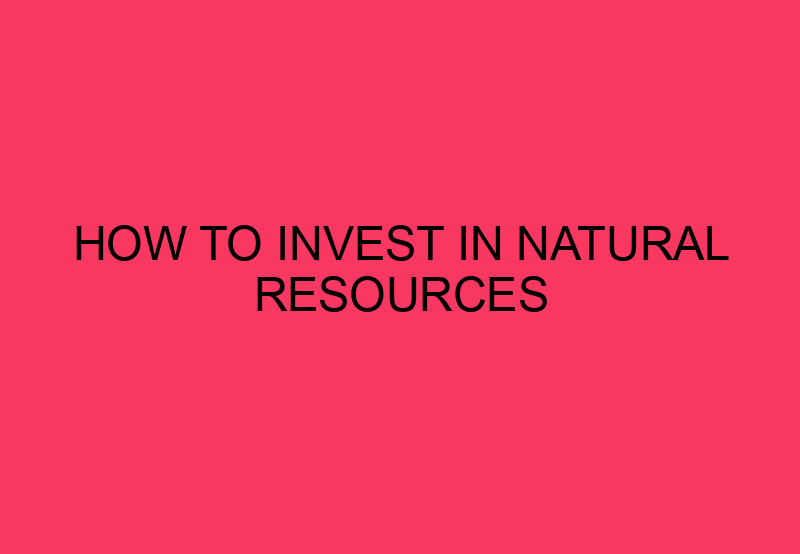Natural resources such as oil, gas, minerals, and timber have provided significant returns for investors over the years. Investing in these resources can be a lucrative way to diversify your portfolio and hedge against inflation. But investing in natural resources is not without risks. In this article, we will provide you with a step-by-step guide on how to invest in natural resources.
Understand the Types of Natural Resources Investment
There are two ways to invest in natural resources – directly and indirectly. Direct investments involve buying and owning the resource itself, such as buying gold or oil stocks. On the other hand, indirect investments involve investing in the companies that produce or extract the resource.
Perform In-Depth Research
Before investing in natural resources, it’s essential to conduct thorough research to identify the most promising resources and companies. For example, you can research their financial statements, production levels, and commodity prices. Also, look at the geological risk or environmental hazards that affect their area of operation.
Consult with an Expert
Consulting with an expert in natural resources can be advantageous to put you on the right path. They can help assess the potential risks involved with minimalizing mistakes that can lead to financial losses. Seeking advice from experts can equip you with up-to-date knowledge on the current market trends, forecast, and regulations that affect natural resources investing.
Consider the Risks
Investing in natural resources can be a high-risk investment. The prices of natural resources are volatile and can be affected by numerous factors, including supply and demand, production capacity, government regulations, environmental hazards, and changing market trends. It would be best if you considered these risks before investing in natural resources.
Diversify Your Portfolio
Diversification is an essential factor in natural resources investing. Instead of investing in just one resource, it is recommended to diversify your portfolio by investing in a mix of resources such as gold, crude oil, timber or, minerals. This way, you can spread the risk and maximize your investment returns.
Conclusion
Investing in natural resources can be a challenging and rewarding venture. It’s essential to take due diligence before investing in natural resources, conduct thorough research, and consult with experts. Consider the potential risks and diversify your portfolio to achieve long-term investment growth. With the right approach, investing in natural resources can provide a reliable and profitable way to invest your money.
